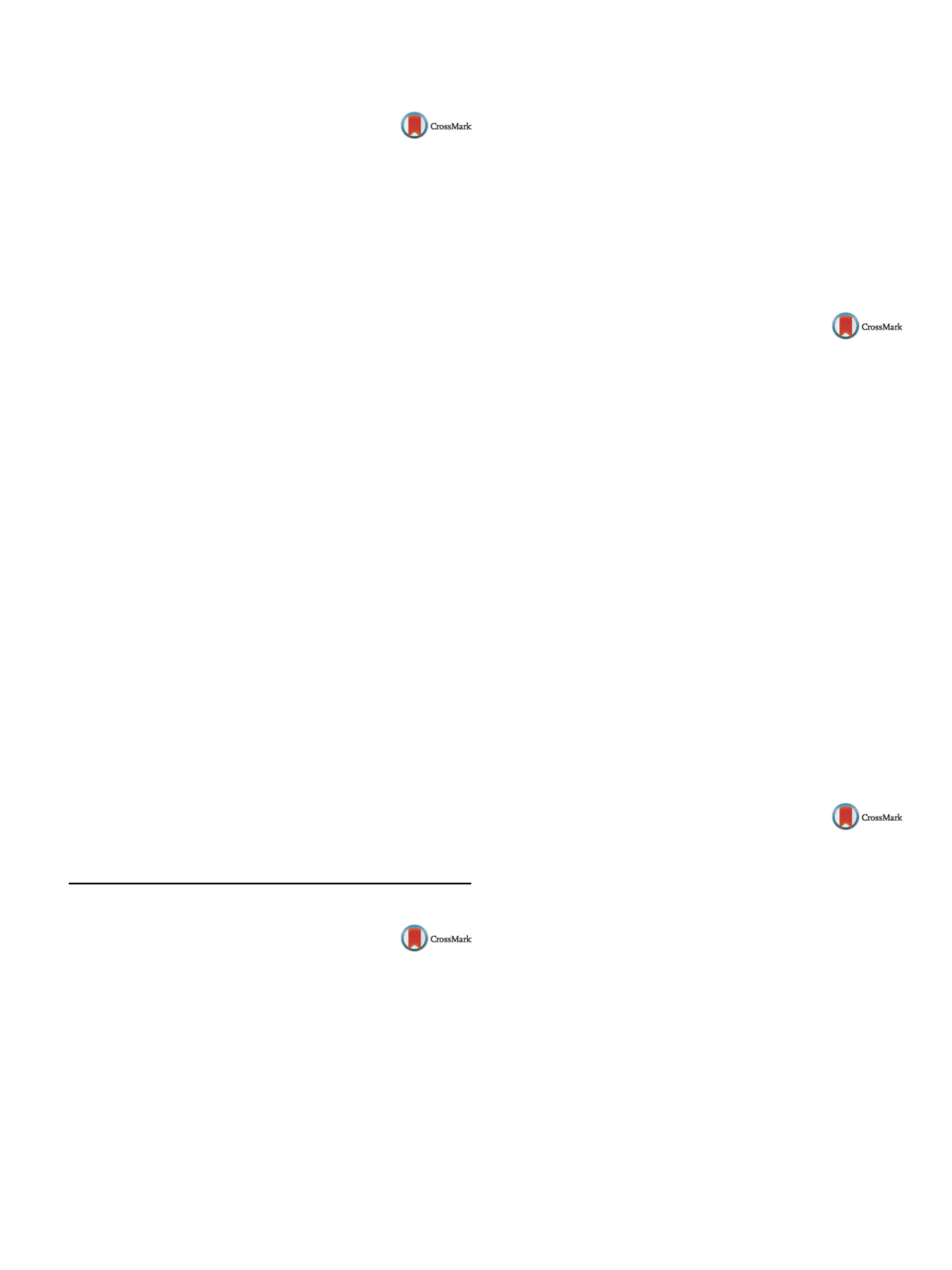

25th European Congress of Psychiatry / European Psychiatry 41S (2017) S8–S52
S11
S010
Neurobiological correlates of learning
and decision-making in alcohol
dependence
M. Sebold
1 ,∗
, S. Nebe
2, M. Garbusow
1, D. Schad
3, C. Sommer
4,
M. Rapp
3, M. Smolka
2, Q. Huys
5, F. Schlagenhauf
1, A. Heinz
11
Charité - Universtitätsmedizin Berlin, Department of Psychiatry and
Psychotherapy, Berlin, Germany
2
TU Dresden, System Neuroscience, Dresden, Germany
3
University of Potsdam, Sport - und Gesundheitswissenschaften,
Potsdam, Germany
4
TU Dresden, Universitätsklinikum Carl Gustav Carus, Dresden,
Germany
5
ETH Zürich and University of Zürich, Translational Neuromodeling
Unit, Zurich, Switzerland
∗
Corresponding author.
The mesolimbic dopaminergic system has been implicated in two
kinds of reward processing, one in reinforcement learning (e.g pre-
diction error) and another in incentive salience attribution (e.g.
cue-reactivity). Both functions have been implicated in alcohol
dependence with the former contributing to the persistence of
chronic alcohol intake despite severe negative consequences and
the latter playing a crucial role in cue-induced craving and relapse.
The bicentric study “Learning in alcohol dependence (LeAD)”
aims to bridge a gap between these processes by investigating
reinforcement learning mechanisms and the influence that Pavlo-
vian cues exert over behavior. We here demonstrate that alcohol
dependent subjects showalterations in goal-directed, model-based
reinforcement learning (Sebold et al., 2014) and demonstrate that
prospective relapsing patients show reductions in the medial pre-
frontal cortex activation during goal-directed control. Moreover
we show that in alcohol dependent patients compared to healthy
controls, Pavlovian cues exert pronounced control over behav-
ior (Garbusow et al., 2016). Again, prospective relapsing patients
showed increased Nucleus accumbens activation during these cue-
induced responses. These findings point to an important role of
the mesolimbic dopaminergic system as a predictor of treatment
outcome in alcohol dependence.
Disclosure of interest
The authors have not supplied their decla-
ration of competing interest.
http://dx.doi.org/10.1016/j.eurpsy.2017.01.084Symposium: Assisted suicide: An issue for old age
psychiatry?
S011
Euthanasia, physician assisted suicide
in the Netherlands in dementia and
late life psychiatric illness
M. Stek
The Netherlands
Background
Although controversial in many countries, in The
Netherlands euthanasia or physician assisted death has increased
in patients with early stages of dementia, psychiatric illness and in
conditions described as ‘being tired of life’ in the oldest old. There
is a strong debate about this practice in the community and among
professionals often with exclamation marks ranging from medical
murder to providing ultimate care.
Objective
To provide figures, describe current practice and
debate in The Netherlands with regard to capacity evaluation in
older psychiatric patients and end of life questions.
Methods
Review of literature, case reports and own experience
in the past decade.
Result and conclusion
There are few studies on the important
issue of capacity making in psychiatric patients. The research that
was performed does not show that a high threshold of capacity is
required for granting euthanasia. Research on physician-assisted
death in early dementia is scarce. With regard to end of life ques-
tions the debate in The Netherlands is still ongoing.
Disclosure of interest
The author has not supplied his declaration
of competing interest.
http://dx.doi.org/10.1016/j.eurpsy.2017.01.085S012
Suicide and assisted suicide in
Switzerland: Consequences for suicide
prevention
G. Stoppe
MentAge, Basel, Switzerland
As in other countries, in Switzerland, the rate of suicide is highest in
the elderly. Assisted suicide is allowed and mostly exerted by pri-
vate organizations like EXIT. The number of assisted suicide cases
has doubled during the last five years and is expected to increase. It
is mainly committed by women. In the age group 80 + y the number
is higher than the number of suicides. To reduce the number of sui-
cides by 25% by 2030, the federal authorities have issued a national
action plan in November 2016. It includes preventive means like
reduction of access to methods (weapons, drugs), construction of
bridges and buildings, education of lays and professionals and spe-
cific treatment of thosewho have attempted suicide. There has been
a position paper of Swiss public health concerning suicide preven-
tion in the elderly. Both papers will be presented and discussed.
Concerning assisted suicide there is a broad discussion on the con-
trol of the state and on the role of physicians in the process. A survey
of Swiss physicians showed much ambivalence. Position papers of
gerontological and geriatric societies focused on the role loneliness
and the provision of adequate psychiatric help, e.g. for depression,
and the overestimation of autonomy.
Disclosure of interest
The author has not supplied his declaration
of competing interest.
http://dx.doi.org/10.1016/j.eurpsy.2017.01.086S013
Mental health and social care
providers facing requests of assisted
suicide from elderly in nursing homes
in Switzerland
D.A. Castelli Dransart
1 ,∗
, S. Voélin
2, S. Elena
11
University of Applied Sciences and Arts Western Switzerland-
School of Social Work Fribourg, Research and Development, Givisiez,
Switzerland
2
University of Applied Sciences and Arts Western Switzerland-
School of Social Work Geneva, Research, Geneva, Switzerland
∗
Corresponding author.
Introduction
In some Swiss states, right-to-die associations are
allowed to assist older people in nursing homes provided that cer-
tain requirements are fulfilled.
Objectives
To investigate how health and social care providers
and their institutions reacted to and dealt with requests of assisted
suicide.
Method
An exploratory qualitative study was carried out in the
States of Fribourg and Vaud among 40 professionals working in
nursing homes, home care services or social welfare agencies.
Results
The requests of assisted suicide questioned the profes-
sional mission, the quality of accompaniment provided to the older
people and both professional and personal values. Health and social


















